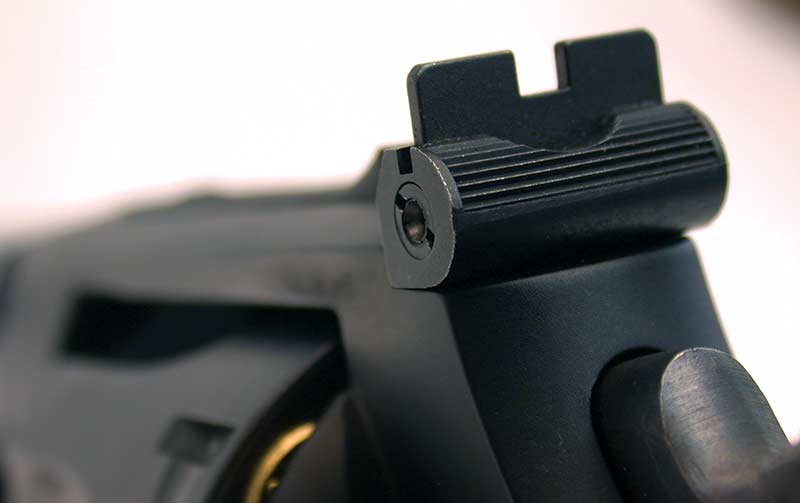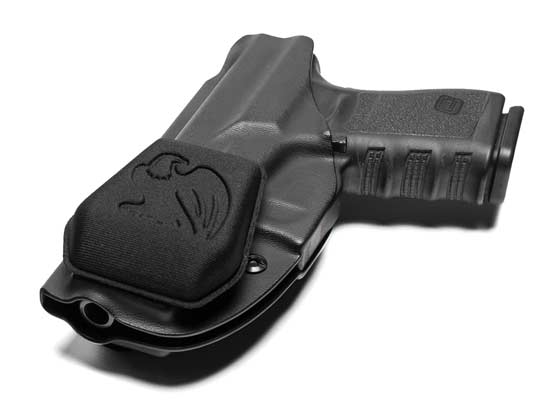Fixed Or Not?
There can be a range of arguments about the validity of sights on firearms. Early designs used the “point the thing, turn your head and add fire” concept, generally leading to smoldering eyebrows. Sights improved as cartridge cases enclosed the flaming-face concept of shooting, and people wanted to look at what they were shooting at.
The tired issue of what environment the weapon is being used in and its effects on sight acquisition is duly noted. It’s a wise owl who recognizes that a positive way to get hits on a target is to look at the bumpy thing on the front of the barrel. But which bumpy-things are best?
Which One?
Fixed Sights-Pro: Once regulated, fixed sights are more durable for daily carry and can be depended on to hold a solid zero in cases of stress. Driven into dovetails and pinned in place, fixed sights can be tougher than a tree knot — and that’s a good thing.
Fixed Sights-Con: You’d have to whack a handgun pretty hard to mess up fixed sights, but in the case of a front sight, dropping the gun on hard surfaces can mess up a crisp sight picture. Repair attempts can cause a change in zero based on the amount of repair needed. Option two might be to change the barrel. A real fun-meter-pegger and expensive.
A big negative can also be losing your zero based on a change of ammo. If you’re a one-load guy you’ll be in like a big dog.
Adjustable-Pro: The ability to adjust the sight to match the bullet strike on target is the primary value of adjustable sights. For someone who changes ammunition, adjustable sights are the ticket. My friend Duke Venturino is always tinkering — to the shooting public’s advantage — with all kinds of powder and loads to find what works best for different purposes. I’m grateful to him for his work as it saves me lots of tinker-time I can instead spend shooting. In Duke’s world of research, he would be a shining example of someone who could use adjustable sights to his advantage.
Adjustable-Con: You might vote against adjustable sights because of their susceptibility to damage. One of the most notorious is the old Colt Gold Cup rear sight. I have actually seen one guy set the sight for hardball and then weld the sight to the slide. It was ugly — but it worked.
Rear sights on S&W revolvers were often damaged when carried in holsters sans a protective tab like the old Jordon or Tom Three persons rigs. A simple tab or protective piece preempts the problem should you still have an attachment to the old revolving cylinder guns.
Where And Why?
Range: Once the load is selected, the range world is controlled and is pretty easy on equipment. Either fixed or adjustable will work here.
Competition: I guess it would beg the question of what type of competition? If it were a Bullseye format, bold, crisp sight pic-tures would be just the ticket. Adjustables may work well in IPSC if they aren’t crowded out by some scope thing. On the other hand, fixed sights may work just fine in IDPA as in theory, IDPA is replicating a fighting environment.
Field/Hunting: This can be a harsh environment for a handgun. Many opt for fixed sights, a choice I wouldn’t dispute. Adjustable sights may be helpful to solve variations in ammo, and that needs to be considered. But any adjustable sight should be properly pro-tected by carrying systems.
Self-Defense: The basic bulletproof mode would be fixed sights for this world. Properly carried and protected, any type of sights would work as long as reasonable care is taken of the handgun. Although handguns are not the best choice of weapons to defend your life with, they can do the job if used well. The “used well” part would include a sighting system in place and working.
Lacking bombs or bazookas I would fight with the tools I had at hand. For most of us that tool is often a handgun. With that said, triggers manipulated properly and sights aligned as well as possible have a good prob-ability of doing what’s required to save our lives. Selecting which sight is best will likely fall back on your own shoulders. Choose wisely.
Subscribe To American Handgunner

Get More Personal Defense Tips!
Sign up for the Personal Defense newsletter here:







